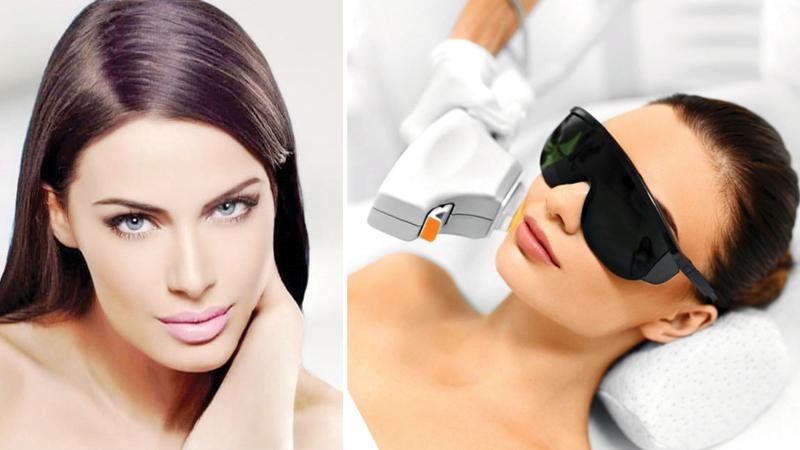
Intense Pulse Light (IPL), or commonly known as “Photofacial”, is one of the most common treatment modalities used in Aesthetic medicine. IPL works by shining an intense pulsating light on your skin. The device that emits this light can fine-tune its frequency and intensity of the light to overcome most skin conditions. First introduced in 1995, IPL has gained a lot of popularity for a variety of medical and cosmetic settings.
While there are varieties, most IPL devices emit intense bursts of non-coherent light of wavelengths ranging from 500 nm to 1200 nm. Devices that are based on Xenon arc lamps can produce higher intensity outputs on broad spectrum frequencies. When the device is lined up adjacent to the skin, it shines an intense stream of pulsing light, which causes the skin to heat up.
This heat, depending on the parameters of the light, can get rid of certain unwanted skin cells. A trained professional knows which device or setting to use for a given skin condition. In general, since lower wavelengths cause less penetration, 500 nm to 650 nm wavelengths perform well on conditions related to the epidermis - the outermost layer of the skin.
A standard IPL treatment takes less than 30 minutes. Depending on the nature of the condition, the treatment can be repeated every 3 - 4 weeks. If the circumstances are right, you may expect to get very clear skin with only 2 or 3 treatments but in some cases it may take 6 - 8 treatments with regular intervals. People who undergo one annual ‘maintenance’ treatment may yield the best outcome. Your skin may become temporarily spicy and fiery for approximately an hour after the treatment, but it will return to normal after a couple of hours.
IPL photofacials are used to treat a variety of skin issues. According to recent research, Intense Pulse Light can remove 50-75 percent of burst blood vessels in the skin, giving some people a cherry-web look. Because these cherry-web vessels need deep penetration of the skin to heal, stronger wavelengths can be used to treat them.
Photofacials are also used to treat acne and rosacea, with promising outcomes in people under the age of 40.
Because of its little downtime, IPL has received great interest among the various techniques used to treat photoaged skin. IPL photofacials are effective in treating sunburns, age spots, and other pigmentations because the thermal heat created by light waves affects the melanin-producing cells, giving the skin a darker look. Photofacial therapy is also utilised to rejuvenate the skin. Repeated IPL treatments can effectively cure wrinkles, fine lines, and the appearance of aging. The theory behind the textural improvement of the skin with tightening effect utilising IPL is that heating collagen fibres with high intensity light energy leads to collagen fiber re-modelling. IPL directly promotes collagen synthesis.
Kamani Liyanage, a middle-aged lady who presented to us with numerous pigmentations on her face and small wrinkles around her eyes and mouth, was treated with four IPL Photofacial treatments four weeks apart at https://mycosmeticclinic.lk/ at Moratuwa Road, Piliyandala. Liyanage exhibited encouraging progress over time, giving herself a younger and smoother skin that glowed more.
IPL photofacials have made the news around the globe with a lot of success since 1995. As a result, IPL has become the primary line of treatment utilised in aesthetic medicine today to treat many cosmetic-related skin diseases.
The writer is a Cosmetic Physician https://mycosmeticclinic.lk/
MBBS (Sri Lanka) MBA (Malaysia) MSc (Sri Lanka)
Member of the American Academy of Aesthetic Medicine (AAAM)
